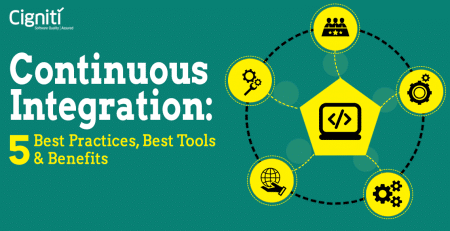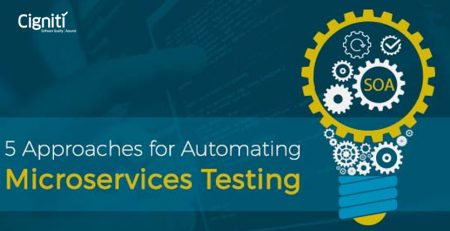Continuous Testing Is The Answer to Software Failures
In 2017, software failures cost the economy US$ 1.7 trillion in financial losses. In total, software failures at 314 companies affected 3.6 billion people and caused more than 268 years in downtime.
Software failures can prove to be the nemesis of organizations in this world of digital transformations as they can cause an undeniable harm. Any software failure thus sounds off an alarm that needs to be taken care of immediately in the C-suite. The best way is to learn from others’ mistakes, as opposed to learning from your own software failures. Catastrophic software failures in the recent years are reminders to the fact that can organizations must pay heed to identify ways and means to control such failures. One of the most common ways is to pay proper heed to, and implement continuous software testing.
Per Gartner: “Application leaders who are modernizing application development face an increasing need to deliver applications faster and of higher quality.” Continuous testing is one of the major enablers for implementing DevOps practices.
A study led by Forrester analyst Diego Lo Giudice and commissioned by Tricentis, found that organizations that invest in agile and DevOps initiatives make active efforts to transform their software testing practices into continuous testing practices. The study concludes that successful organizations allocate proper testing budgets, focus on improving skills, implement continuous testing and automate end-to-end functional testing to meet the demands of release frequency, integrate testers into cross-functional teams, and practice shift-left testing.
These reports make it clear that software companies are adopting, and adapting new technologies to overcome the challenges of software failures, each of which has a lethal impact on reputation, net profit, and customer satisfaction. The aftermath of each major failure disperses far and wide over the Internet and the news, maligning the business for years.
Before getting into what businesses can do to take prevent software failures, let’s take a quick look at a few major software failures that occurred in the past two years across industries, and the kind of impact they had on businesses.
- Doctors and hospital staff of the Wales NHS experienced a widespread computer failure that led to them being unable to access patient files. This caused a backlog as patients could not be contacted to cancel appointments, and notes could not be typed up and saved on NHS systems.
- The Equifax mega-breach of 2017 impacted the Personally Identifiable Information (PII) of nearly half of the adult population in the U.S. – including businessmen, CEOs, and even the most junior-level employees. The reason was poor quality assurance culture and practices. This breach gave a serious jolt to the C-Suite, and made it crystal clear to them the necessity of continuously testing for cybersecurity related issues.
- Pixel 2 XL mobile device had a narrow viewing angle, washed-out colors, and disappointing texture of the screen. Google had to recall the devices and relaunch it. In fact, consumers got the feeling that they were the beta testers to the product. The product launch was declared a massive catastrophe.
- Meltdown and Spectre affected almost all computers on the market. Meltdown primarily affected Intel processors, while Spectre affected Intel, AMD and ARM processors. Daniel Gruss, one of the researchers that discovered the flaw at Graz University of Technology described Meltdown as “one of the worst CPU bugs ever found”.
- WannaCry (also known as WannaCrypt0r and WCry) hit NHS England and various organizations in the UK and around the world. The attack was due to vulnerabilities found in Microsoft operating systems installed in millions of computers around the world.
Reasons for software failures
In an attempt to accomplish customer demand, which changes every minute with more customers asking rather demanding for better, more enhanced, technologically perfect products, many companies face the challenge of providing optimal quality, functionality, as well as performance. Failure of implementing and practicing the latest & best technologies leads to lack of quality, security, and performance of the software in question. The inability and complications involved in putting together the right team with the right skill sets in addition to the fast pace driven by DevOps and Agile methodologies tends to expose inadequacies and limitations within any software.
Employees across organizations feel that they don’t have enough time to dedicate to testing of new apps and services being pushed into production without going through proper QA procedures. This is where thorough, end-to-end, automated and continuous testing can play a critical role.
Continuous testing is the answer to software failures.
Continuous Testing helps organizations deliver robust, quality software at faster go-to-market speeds. Continuous Testing involves execution of automated tests that provide fast and continuous feedback about the business risks involved in the software. This leads to reduced waiting time and saves huge costs later.
- Continuous Testing helps to cut down time taken for Code Review, reduces application-bound risks, brings consistency, enables faster releases, improves Test Coverage, and enables more transparency.
- Continuous testing involves automating the testing of software to fast-track the feedback process on possible defects and any business risks accompanying any given release.
- Continuous testing involves strong integration and bringing together the different stages of QA testing process beginning with the requirements and expectations as well as repeating with new insights, analytics, and user feedback.
- Continuous testing demands a complete test process optimization for enhanced test automation. Automating the maximum tests being run requires utilizing Artificial intelligence (AI), together with Machine Learning and BOTs. AI-powered test automation solutions, or intelligent testing, enhances test case management, uses adaptive learning to detect high-risk defects, bugs, and vulnerabilities; automates analysis of test results to identify, classify, and prioritize defects.
Continuous testing with incorporation of AI in test automation efforts helps enterprises to market challenges and also accomplish the rigorous quality standards necessary to achieve anticipated business outcomes. Implementing a broader and more cohesive approach, continuous testing facilitates businesses in comprehending where they can and should and shouldn’t automate for optimum results. Using continuous testing, businesses can align their systems, processes, QA engineering, and test automation. C-suite will witness fast-tracking cycle time and real business outcomes, including sophisticated quality products and services, improved customer experience, competitive differentiation, and operational efficiency. Additionally, continuous testing increases the flexibility of delivery organization to adjust to changes in the business.
Wikipedia states it best when it says “When software quality efforts and testing are aligned with business expectations, test execution produces a prioritized list of actionable tasks (rather than a potentially overwhelming number of findings that require manual review). This helps teams focus their efforts on the quality tasks that will have the greatest impact, based on their organization’s goals and priorities.
Additionally, when teams are continuously executing a broad set of continuous tests throughout the SDLC, they amass metrics regarding the quality of the process as well as the state of the software. The resulting metrics can be used to re-examine and optimize the process itself, including the effectiveness of those tests. This information can be used to establish a feedback loop that helps teams incrementally improve the process. Frequent measurement, tight feedback loops, and continuous improvement are key principles of DevOps.”
Gartner estimates that “By 2020, DevOps initiatives will cause 50% of enterprises to implement continuous testing using frameworks and open-source tools.” Continuous Testing has been an enabler throughout for enterprises, but it is equally important to incorporate the right approach and the required factors to make it work for your organization.
Continuous testing acts as the key driver for DevOps initiatives to yield desired outcomes. Cigniti’s Continuous Integration (CI) testing experts boast of a rich experience and can configure and execute popular CI tools such as Agile GO, Cruise Control, Chef, Puppet, Microsoft TFS, Jenkins, Bamboo, Hudson and so on, helping client’s DevOps teams. Connect with our experts and check out Cigniti’s DevOps Test Center of Excellence that extends a host of services.





Leave a Reply